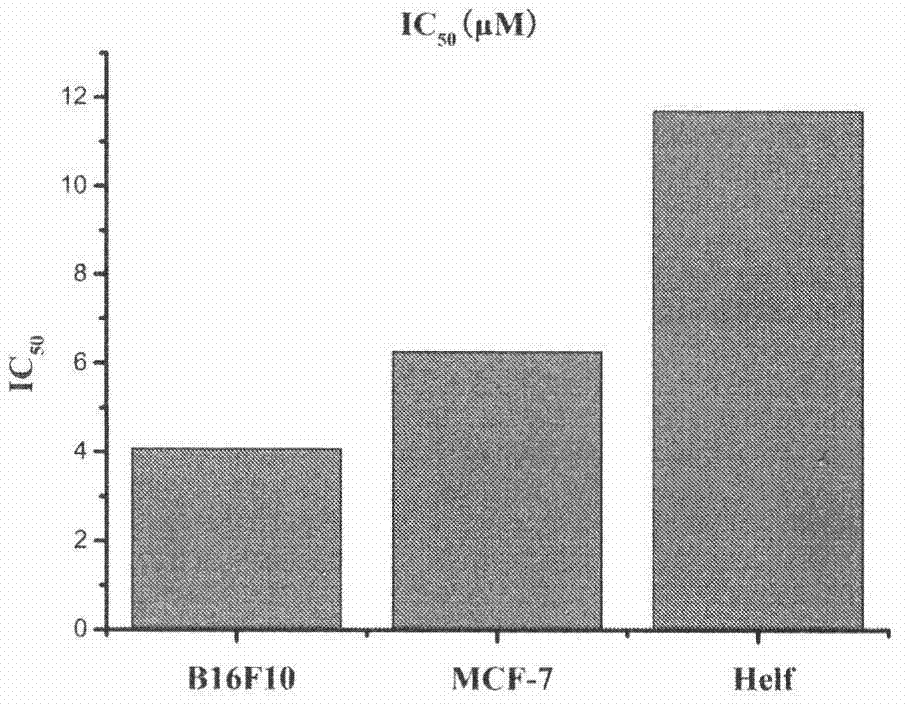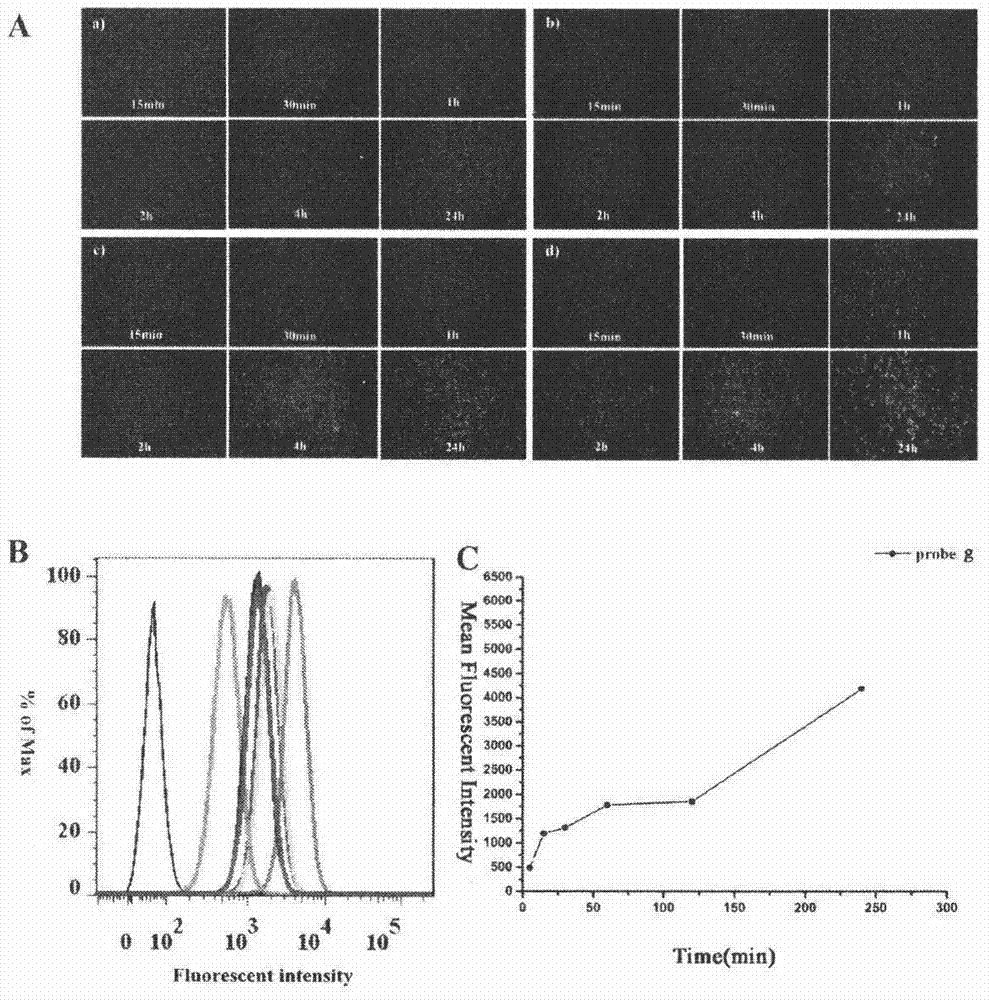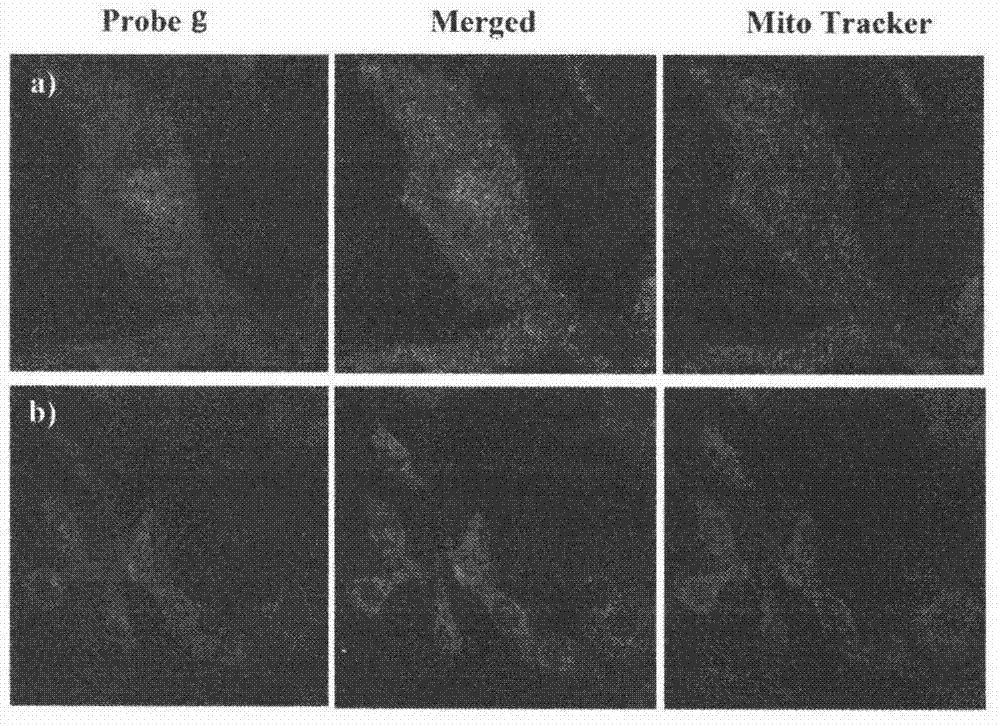23‑Hydroxybetulinic acid fluorescent probe, its preparation and its use in cell localization and uptake
A fluorescent probe, betulinic acid technology, which is used in the preparation of fluorescent probes, anti-tumor active natural product 23-hydroxy betulinic acid fluorescent probes, and the application field of detecting 23-hydroxy betulinic acid in the localization and uptake of target cells, It can solve the problems of unclear target and mode of action of cells, incomplete elucidation of the anti-tumor molecular mechanism of 23-HBA, and unexplored molecular mechanism of action, so as to achieve the effect of good effect, mild conditions and anti-tumor effect.
- Summary
- Abstract
- Description
- Claims
- Application Information
AI Technical Summary
Problems solved by technology
Method used
Image
Examples
Embodiment 1
[0042] Synthesis of 23-HBA fluorescent probe
[0043] Compound a (2g, 7.7mmol), N-hydroxysuccinimide (1.3g, 11.5mmol) and EDCI (1.8g, 9.2mmol) were dissolved in dichloromethane (20.0mL), stirred at room temperature for 4h, concentrated Add water, extract with dichloromethane (30mL×3), combine the organic layers, wash with water, wash with saturated brine, anhydrous Na 2 SO 4 After drying and concentration, column chromatography (CH 2 Cl 2 / CH 3 OH 100:1, v / v) afforded the target compound b (2 g, 72.9%). 1 H-NMR (CDCl 3 , 300MHz) δ: ppm 1.26 (6H, t, J = 7.1Hz), 2.90 (4H, s), 3.48 (4H, q, J = 7.1Hz), 6.45 (1H, d, J = 1.9Hz, Ar- H), 6.65 (1H, dd, J=9.0Hz, J=2.2Hz, Ar-H), 7.38 (1H, d, J=9.0Hz, Ar-H), 8.59 (1H, s, Ar-H) .
[0044] Dissolve compound b (700mg, 1.95mmol), N-Boc-ethylenediamine (0.4mL) and DIPEA (1.4mL) in dichloromethane (20.0mL), stir at room temperature for 3h, add water after concentration, dichloromethane Extract (30mL×3), combine the organic layers, wash...
Embodiment 2
[0050] Anti-tumor Proliferation Activity of 23-HBA Fluorescent Probe
[0051] The tumor cells in the logarithmic growth phase were digested, counted, and prepared at a concentration of 5×10 4 cells / mL of cell suspension, 100 μL of cell suspension was added to each well of a 96-well plate (5×10 3 cells). Place the 96-well plate at 37°C, 5% CO 2 After culturing in the incubator for 24 hours, the drug was diluted to the desired concentration with complete medium, and 100 μL of the corresponding drug-containing medium was added to each well. Place the 96-well plate at 37°C, 5% CO 2 After culturing in the incubator for 72 hours, stain the 96-well plate with MTT; add 20 μL MTT (5 mg / mL) to each well, and continue culturing in the incubator for 4 hours; discard the medium, add 150 μL DMSO to each well to dissolve, and shake for 10 minutes Mix gently; λ=490nm, read the OD value of each well with a microplate reader, and calculate the inhibition rate. Experimental results (see fi...
Embodiment 3
[0053] 23-HBA fluorescent probe staining of B16F10 cells
[0054] B16F10 cells in the logarithmic growth phase were selected and inoculated on glass coverslips placed in a 6-well plate, 5×10 cells per well 4 After 24 hours of attachment to the cells, compound g (2 μM, 4 μM, 10 μM and 20 μM in DMSO) was added and incubated in complete medium at different time points (15min, 30min, 1h, 2h, 4h, 24h). After incubation for the corresponding time, cells were fixed with 4% paraformaldehyde (in 1×PBS) for 10 minutes, and after washing with PBS, the glass coverslips were removed for fluorescence imaging. Under the fluorescent microscope, observe the coloring part of the cells, the distribution of fluorescence and the change of brightness, etc., the results are shown in figure 2 a.
[0055] B16F10 cells in the logarithmic growth phase were selected and inoculated on glass coverslips placed in a 6-well plate, 5×10 cells per well 5 After 24 hours of attachment, 10 μM compound g was ad...
PUM
 Login to View More
Login to View More Abstract
Description
Claims
Application Information
 Login to View More
Login to View More - R&D
- Intellectual Property
- Life Sciences
- Materials
- Tech Scout
- Unparalleled Data Quality
- Higher Quality Content
- 60% Fewer Hallucinations
Browse by: Latest US Patents, China's latest patents, Technical Efficacy Thesaurus, Application Domain, Technology Topic, Popular Technical Reports.
© 2025 PatSnap. All rights reserved.Legal|Privacy policy|Modern Slavery Act Transparency Statement|Sitemap|About US| Contact US: help@patsnap.com



